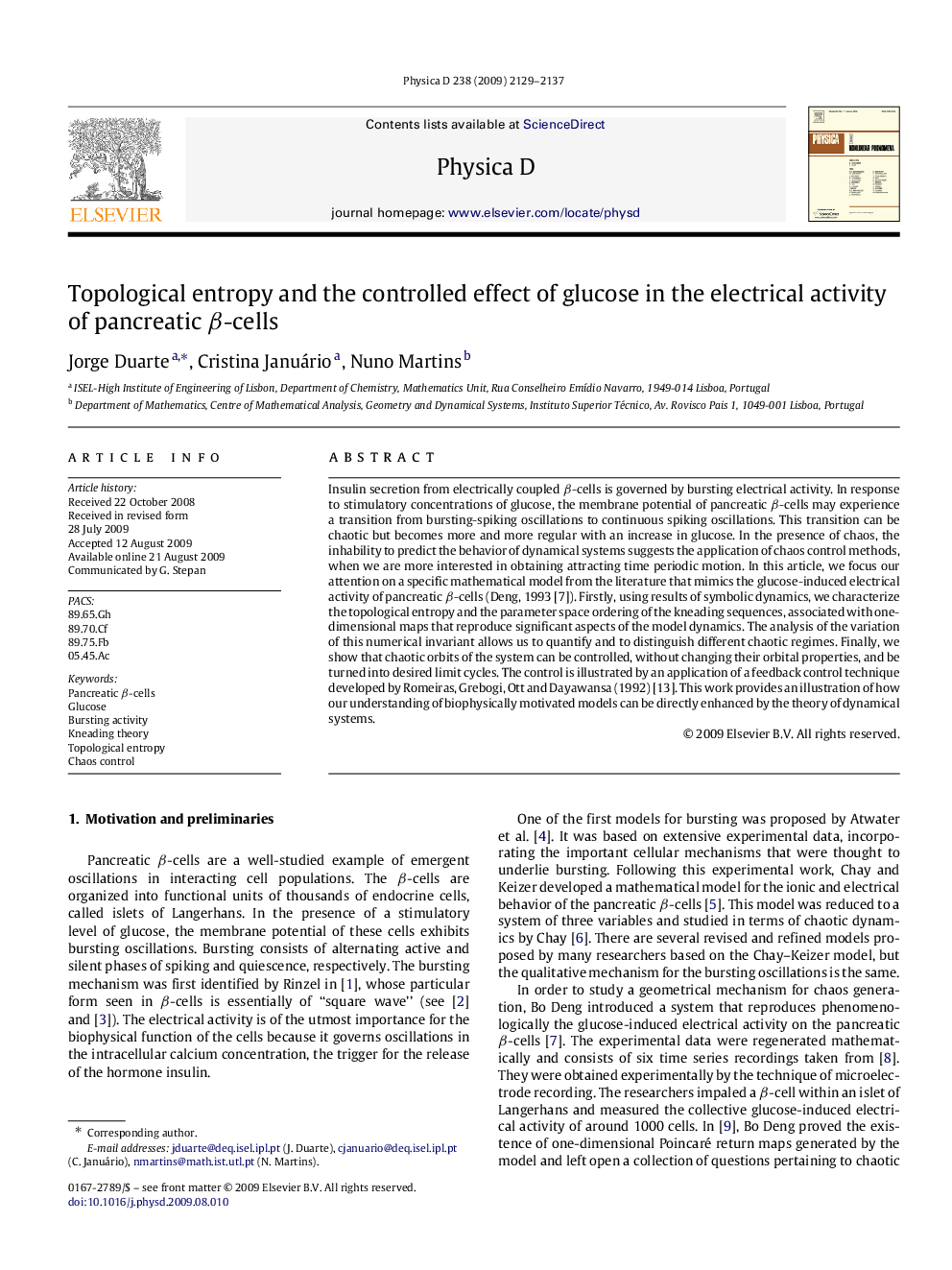| Article ID | Journal | Published Year | Pages | File Type |
|---|---|---|---|---|
| 10735982 | Physica D: Nonlinear Phenomena | 2009 | 9 Pages |
Abstract
Insulin secretion from electrically coupled β-cells is governed by bursting electrical activity. In response to stimulatory concentrations of glucose, the membrane potential of pancreatic β-cells may experience a transition from bursting-spiking oscillations to continuous spiking oscillations. This transition can be chaotic but becomes more and more regular with an increase in glucose. In the presence of chaos, the inhability to predict the behavior of dynamical systems suggests the application of chaos control methods, when we are more interested in obtaining attracting time periodic motion. In this article, we focus our attention on a specific mathematical model from the literature that mimics the glucose-induced electrical activity of pancreatic β-cells (Deng, 1993 [7]). Firstly, using results of symbolic dynamics, we characterize the topological entropy and the parameter space ordering of the kneading sequences, associated with one-dimensional maps that reproduce significant aspects of the model dynamics. The analysis of the variation of this numerical invariant allows us to quantify and to distinguish different chaotic regimes. Finally, we show that chaotic orbits of the system can be controlled, without changing their orbital properties, and be turned into desired limit cycles. The control is illustrated by an application of a feedback control technique developed by Romeiras, Grebogi, Ott and Dayawansa (1992) [13]. This work provides an illustration of how our understanding of biophysically motivated models can be directly enhanced by the theory of dynamical systems.
Keywords
Related Topics
Physical Sciences and Engineering
Mathematics
Applied Mathematics
Authors
Jorge Duarte, Cristina Januário, Nuno Martins,
